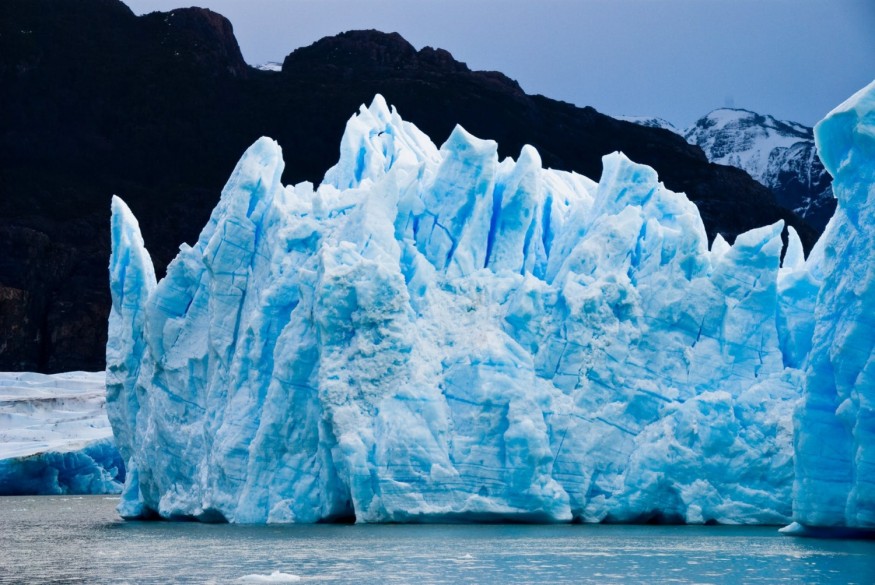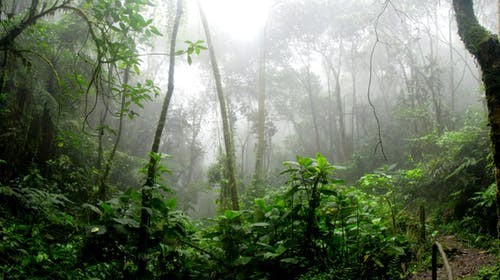

This threatens the loss of the Amazon rainforest and the great ice sheets of Antarctica and Greenland, which are currently undergoing measurable and unprecedented changes much earlier than expected.
This "cascade" of changes sparked by global warming could threaten the existence of human civilisations.
Evidence is mounting that these events are more likely and more interconnected than was previously thought, leading to a possible domino effect.
In an article in the journal Nature, the scientists call for urgent action to reduce greenhouse gas emissions to prevent key tipping points, warning of a worst-case scenario of a "hothouse", less habitable planet.
"A decade ago we identified a suite of potential tipping points in the Earth system, now we see evidence that over half of them have been activated," said lead author Professor Tim Lenton, director of the Global Systems Institute at the University of Exeter.
"The growing threat of rapid, irreversible changes means it is no longer responsible to wait and see. The situation is urgent and we need an emergency response."
Co-author Johan Rockström, director of the Potsdam Institute for Climate Impact Research, said: "It is not only human pressures on Earth that continue rising to unprecedented levels.
"It is also that as science advances, we must admit that we have underestimated the risks of unleashing irreversible changes, where the planet self-amplifies global warming.
"This is what we now start seeing, already at 1°C global warming.
"Scientifically, this provides strong evidence for declaring a state of planetary emergency, to unleash world action that accelerates the path towards a world that can continue evolving on a stable planet."
In the commentary, the authors propose a formal way to calculate a planetary emergency as risk multiplied by urgency.
Tipping point risks are now much higher than earlier estimates, while urgency relates to how fast it takes to act to reduce risk.
Exiting the fossil fuel economy is unlikely before 2050, but with temperature already at 1.1°C above pre-industrial temperature, it is likely Earth will cross the 1.5°C guardrail by 2040. The authors conclude this alone defines an emergency.
Nine active tipping points:
- Arctic sea ice
- Greenland ice sheet
- Boreal forests
- Permafrost
- Atlantic Meridional Overturning Circulation
- Amazon rainforest
- Warm-water corals
- West Antarctic Ice Sheet
- Parts of East Antarctica
The collapse of major ice sheets on Greenland, West Antarctica and part of East Antarctica would commit the world to around 10 metres of irreversible sea-level rise.
Reducing emissions could slow this process, allowing more time for low-lying populations to move.
The rainforests, permafrost and boreal forests are examples of biosphere tipping points that if crossed result in the release of additional greenhouse gases amplifying warming.
Despite most countries having signed the Paris Agreement, pledging to keep global warming well below 2°C, current national emissions pledges - even if they are met - would lead to 3°C of warming.
Although future tipping points and the interplay between them is difficult to predict, the scientists argue: "If damaging tipping cascades can occur and a global tipping cannot be ruled out, then this is an existential threat to civilization.
"No amount of economic cost-benefit analysis is going to help us. We need to change our approach to the climate problem."
Professor Lenton added: "We might already have crossed the threshold for a cascade of inter-related tipping points.
"However, the rate at which they progress, and therefore the risk they pose, can be reduced by cutting our emissions."
Though global temperatures have fluctuated over millions of years, the authors say humans are now "forcing the system", with atmospheric carbon dioxide concentration and global temperature increasing at rates that are an order of magnitude higher than at the end of the last ice age.
© 2025 NatureWorldNews.com All rights reserved. Do not reproduce without permission.





